by Ken Lain, the mountain gardener
Gardening may be one of America’s favorite hobbies, but it does have a downside: Imagine investing dozens of hours and hundreds of dollars redecorating your bedroom, only to have it crumble to ashes in less than a year! That is a good analogy to planting and nurturing a garden that withers away after one season. Fortunately, not all plants will go belly-up each fall/winter. By choosing those specifically vigorous perennial plants that tolerate a wide range of growing conditions, you can be assured that your investment of time and money will bring you pleasure repeatedly for many growing seasons.

Bee Balm – Much is made of the drought tolerance of plants, but a wet place in the garden can be just as difficult to cultivate. Bee balm is one answer to the soggy garden dilemma. Three-foot-tall clumps feature blue, pink, red, or white flowers that attract butterflies and hummingbirds. As a member of the mint family, bee balm is an assertive plant, but those that spread out of bounds are easily pulled out to maintain control. New varieties boast superior mildew resistance
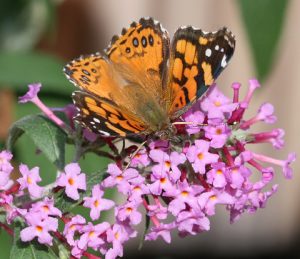
Butterfly Bush – Gardeners who make room for a buddleia in their landscapes will soon discover that it’s a one-stop, non-stop buffet for many species of butterflies. The long flower panicles are comprised of many individual blooms, each filled with a rich store of nectar. That’s why numerous butterflies are observed lingering around the shrub on warm, sunny days! Flowering happens on new wood, so frigid zone 5 winters have no effect on the summer show. Plant butterfly bushes in full sun, in average soil, and cut back plants in early spring to encourage strong branching.
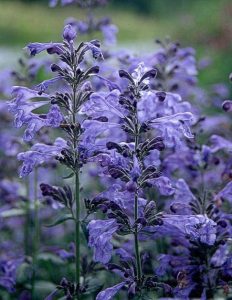
Catmint – More than just a little herb for the cat to frolic in, catmint gained permanent cult status when the ‘Walker’s Low’ variety was named the 2007 Perennial Plant of the Year. Lovely grayish-green foliage complements, and bees delight in, the nectar-rich violet blooms that appear throughout the summer months. Plants grow to about two feet tall but have a prostrate habit that looks attractive at the edge of a wall or path.
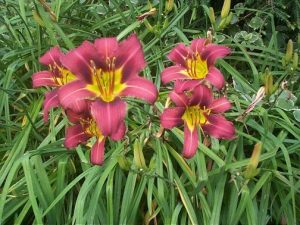
Daylily – Stella D’ Oro daylilies have become an office park landscaping staple, but everblooming daylilies have much more to offer than this popular gold variety. Although the color spectrum is limited to the warmer side of the color wheel, exciting color patterns and flower forms take the available cultivar numbers into the thousands. Full sun is best, although darker varieties may benefit from afternoon shade to prevent sunscald. Fertilization isn’t necessary, but an occasional deep watering during summer dry spells is beneficial.
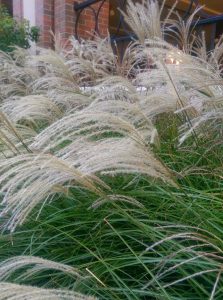
Feather Reed Grass – Ornamental grasses belong on every lazy gardener’s wish list. Many of them originate from the prairie so are accustomed to surviving a range of pests and demanding weather conditions. The deep roots of feather reed grass make it adaptable to wet and dry soils, and it grows just fine in lean soils, requiring no fertilizer. The six-foot flowering stalks make a beautiful vertical accent that endures well into fall.
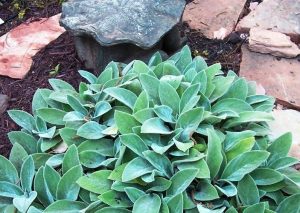
Lamb’s Ear – This plant is for the fifth sense of a garden, as it is a physical plant like few others. More than just fuzzy, the silvery leaves are downright woolly and hold up to stroking more than a silky flower petal would do. The lavender spikes don’t look like much, but bees love them. Lamb’s ear plants grow in full to partial sun and are quite drought tolerant. The clumps that spread each year provide pass-along plants for friends, or can be added to enhance the volume of foliage in containers.
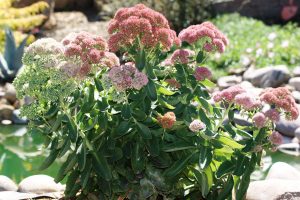
Sedum – Sometimes tough plants have a reputation for being invasive, but drought tolerant sedum plants always mind their manners. Also called stonecrop, this plant can survive for years without any watering, dividing, mulching, or deadheading. The diverse genus offers tall and creeping varieties, all with succulent leaves that shrug off insects. Gardeners new to sedums should start with the wildly popular, dependable, and nearly maintenance free ‘Autumn Joy’, which at the end of summer produces nectar-rich pink flower clusters.
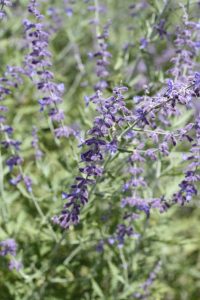
Russian Sage – In neighborhoods with new construction, topsoil is stripped away, and the rubble that’s left behind hardly qualifies as soil. What to plant in such a harsh environment? Start with this tough-as-nails perennial that features a cloud of sky-blue flowers for three months in its first season! The one factor Russian sage can’t live without is full sun, as it’s essential for healthy bloom production. As we all are aware, “full sun” is bestowed very generously upon our local area gardens!
Until next week, I’ll be helping local gardeners here at Watters Garden Center.
Ken Lain can be found throughout the week at Watters Garden Center, 1815 W. Iron Springs Rd in Prescott, or contacted through her web site at WattersGardenCenter.com or FB.com/WattersGardenCenter .

